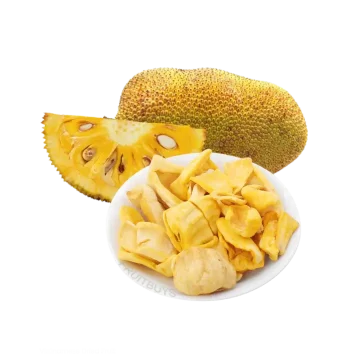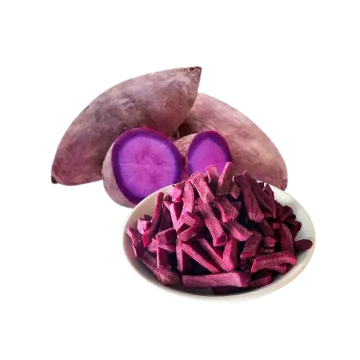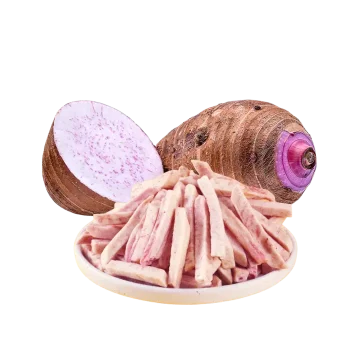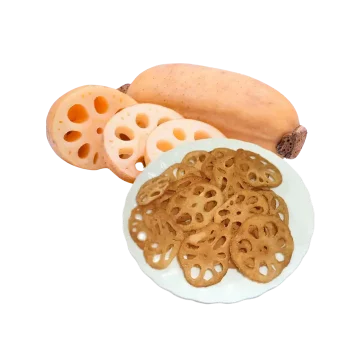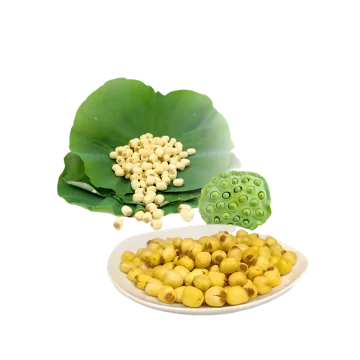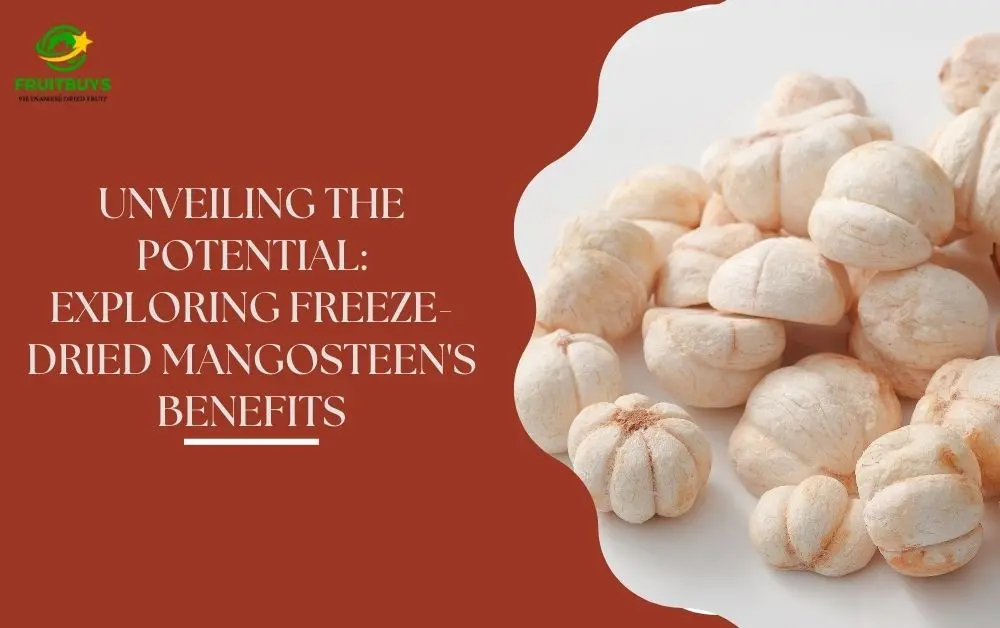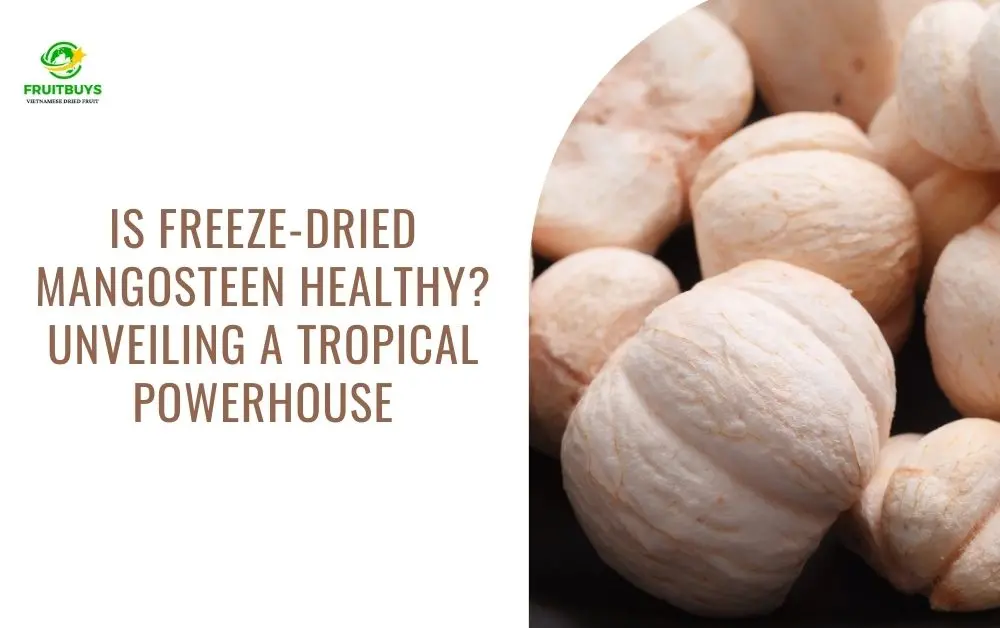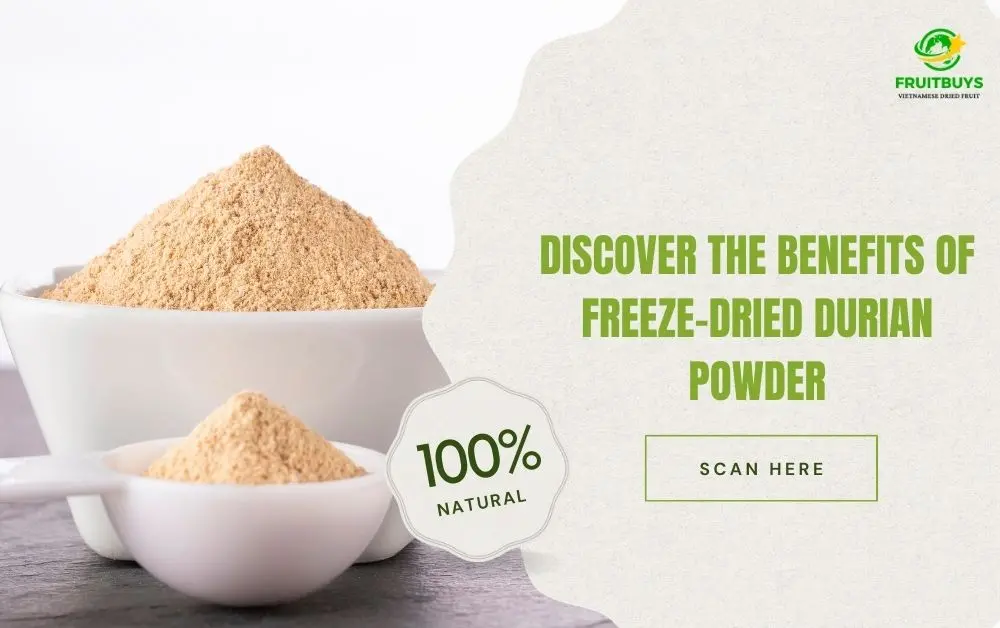Sweet potatoes are not only delicious, but also nutritious. They are packed with vitamins, minerals, antioxidants, and fiber that can boost your health and well-being. Whether you want to improve your immune system, lower your blood sugar, or lose weight, sweet potatoes can help you achieve your goals. But where can you find the sweet potatoes in the market? The answer is FruitBuys Vietnam. We are a professional wholesale supplier and exporter of premium exotic fruits, freeze dried fruit, healthy snacks, dried fruit, veggie chips, vegan snacks, no sugar snacks, and low-sugar snacks with advanced drying technologies such as Air Drying (AD), Freeze Drying (FD), Vacuum Frying (VF).

We focus on quality assurance, wholesale prices, high profits, and reliable logistics & supply with 7 years of experience. Natural tropical fruit lines from Vietnam such as: Banana, Dragon fruit, Durian, Jackfruit, Mango, Papaya, Passion fruit, Pineapple, Sapodilla, Strawberries, Soursop, Rambutan, Avocado, Cashew nuts, Sweet Potato, Lotus, Taro and more. In this article, we will show you why sweet potatoes are so good for you and how you can enjoy them in different ways.
We will also tell you why FruitBuys Vietnam is the best choice for buying sweet potatoes and other exotic fruits and healthy snacks. If you are interested in learning more or placing an order with us, please contact us at email support@fruitbuys.com or WhatsApp at +84-919 739 589. We are looking forward to hearing from you soon!
I. How Sweet Potatoes Can Boost Your Immune System
One of the main health benefits of sweet potatoes is their ability to boost your immune system. This is because they are rich in beta-carotene, which is a precursor of vitamin A. Vitamin A is essential for maintaining healthy skin, eyes, and mucous membranes, which are the first line of defense against infections. Vitamin A also helps regulate the immune system and prevent inflammation.
According to the World Health Organization (WHO), vitamin A deficiency is a major public health problem in many developing countries, especially among children and pregnant women. It can cause night blindness, increased susceptibility to infections, and increased risk of mortality. Sweet potatoes can help prevent vitamin A deficiency by providing up to 90% of the recommended daily intake of vitamin A in one medium-sized sweet potato.
To get the most out of sweet potatoes, you should eat them with some fat, such as olive oil or butter. This will help your body absorb the beta-carotene better. You can also try different ways of incorporating sweet potatoes into your diet, such as soups, salads, or baked fries. Here are some recipes that you can try:
- Sweet Potato Soup with Coconut Milk and Ginger
- Roasted Sweet Potato Salad with Cranberries and Pecans
- Spicy Baked Sweet Potato Fries with Garlic Aioli
Read More: 7 Reasons Why Purple Sweet Potatoes Are the Best Thing You Can Eat Today
II. Sweet Potatoes vs Regular Potatoes: Which One Is Healthier?
You may be wondering how sweet potatoes compare to regular potatoes in terms of nutrition and health benefits. Both are starchy vegetables that provide carbohydrates, fiber, and potassium. However, there are some differences that may make sweet potatoes a better choice for your health.
One of the main differences is the glycemic index (GI) of the two types of potatoes. The GI is a measure of how quickly a food raises your blood sugar and insulin levels after you eat it. Foods with a high GI can cause spikes and crashes in your blood sugar and insulin levels, which can lead to cravings, hunger, and overeating. Foods with a low GI can help you control your blood sugar and insulin levels, which can prevent or manage diabetes, obesity, and heart disease.
Sweet potatoes have a lower GI than regular potatoes, which means they cause less fluctuations in your blood sugar and insulin levels. According to the International Table of Glycemic Index and Glycemic Load Values, the GI of boiled sweet potatoes is 46, while the GI of boiled regular potatoes is 78. The GI of baked sweet potatoes is 94, while the GI of baked regular potatoes is 111.
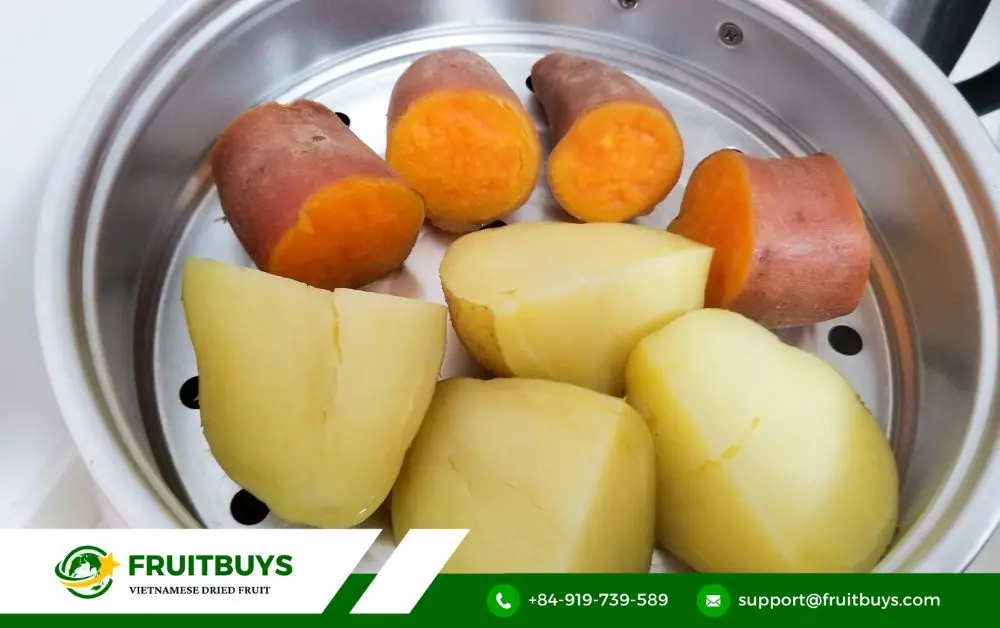
Another difference is the vitamin and mineral content of the two types of potatoes. Sweet potatoes are richer in beta-carotene, vitamin A, vitamin C, vitamin B6, manganese, and copper than regular potatoes. These nutrients can help protect your eyesight, skin health, immune system, nervous system, bone health, and antioxidant status. Regular potatoes are richer in vitamin B3, iron, and phosphorus than sweet potatoes. These nutrients can help support your energy production, red blood cell formation, and bone health.
In summary, sweet potatoes have a lower GI and more vitamins and minerals than regular potatoes. This makes them a healthier option for your diet. However, this does not mean that you should avoid regular potatoes altogether. They can still be part of a balanced diet if you eat them in moderation and choose healthy cooking methods. For example, you can boil or steam them instead of frying or roasting them with oil. You can also avoid adding unhealthy toppings such as butter and marshmallows to your potatoes. Instead, you can add some herbs, spices, or yogurt to enhance their flavor.
III. The Best Ways to Cook Sweet Potatoes for Maximum Nutrition
Sweet potatoes are versatile and can be cooked in various ways. However, not all cooking methods are equal when it comes to preserving their nutrient content and availability. Some cooking methods can destroy or reduce the amount of beta-carotene and vitamin C in sweet potatoes, while others can enhance their absorption and bioavailability.
According to a study published in the Journal of Food Science, the best way to cook sweet potatoes to preserve their beta-carotene and vitamin C levels is to steam them. Steaming can retain up to 90% of beta-carotene and 80% of vitamin C in sweet potatoes. Boiling can also preserve most of the beta-carotene and vitamin C in sweet potatoes, but it can leach some of them into the water. Microwaving can retain up to 80% of beta-carotene and 70% of vitamin C in sweet potatoes, but it can also cause some loss due to heat exposure.
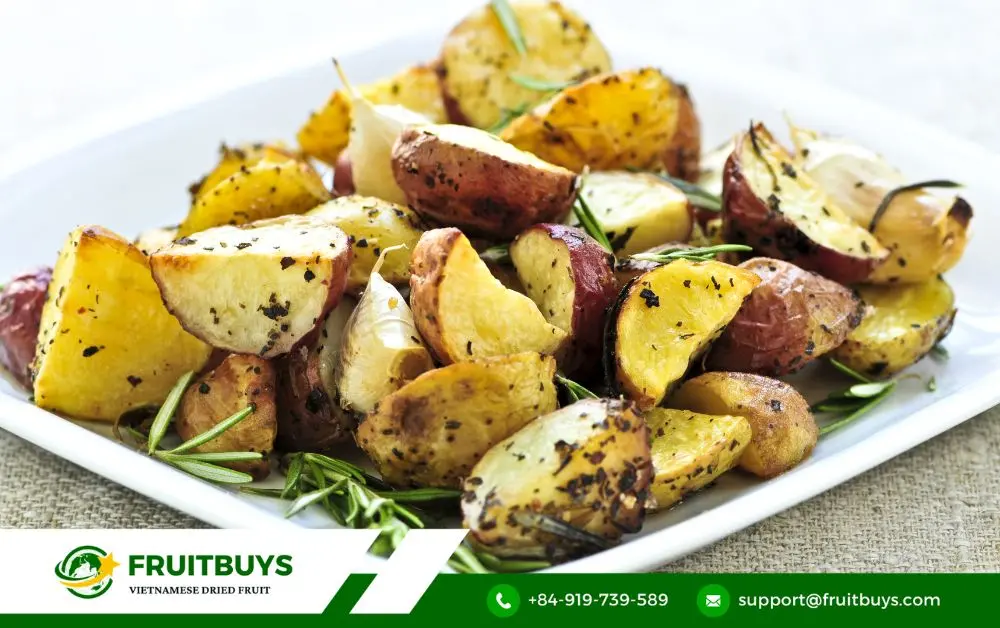
The worst way to cook sweet potatoes for their nutrient content is to fry or roast them with oil. Frying or roasting can destroy up to 70% of beta-carotene and 60% of vitamin C in sweet potatoes. It can also add unhealthy fats and calories to your dish. Therefore, you should avoid these cooking methods if you want to get the most out of your sweet potatoes. To get the most out of sweet potatoes, you should also eat them with some fat, such as olive oil or butter.
This will help your body absorb the beta-carotene better, as it is a fat-soluble nutrient. You can also add some lemon juice or vinegar to your sweet potatoes, as this will help preserve their vitamin C content, as it is a water-soluble nutrient. You can try different ways of incorporating sweet potatoes into your diet, such as soups, salads, or baked fries. Here are some recipes that you can try:
- Sweet Potato Soup with Coconut Milk and Ginger
- Roasted Sweet Potato Salad with Cranberries and Pecans
- Spicy Baked Sweet Potato Fries with Garlic Aioli
Read More: 5 Reasons Why Yellow Sweet Potatoes Are The Ultimate Superfood
IV. Sweet Potato Nutrition Facts and Health Benefits
Sweet potatoes are not only tasty, but also healthy. They are loaded with nutrients that can benefit your body and mind. Here are some of the nutrition facts and health benefits of sweet potatoes per 100 grams:
- Calories: 86 g
- Carbohydrates: 20.1 g
- Fiber: 3 g
- Protein: 1.6 g
- Fat: 0.1 g
- Beta-carotene: 11.5 mg
- Vitamin A: 961 mcg (107% of the recommended daily intake or RDI)
- Vitamin C: 19.6 mg (22% of the RDI)
- Vitamin B6: 0.2 mg (15% of the RDI)
- Manganese: 0.4 mg (18% of the RDI)
- Copper: 0.1 mg (11% of the RDI)
- Potassium: 337 mg (7% of the RDI)
- Magnesium: 25 mg (6% of the RDI)
- Calcium: 30 mg (3% of the RDI)
- Iron: 0.6 mg (3% of the RDI)
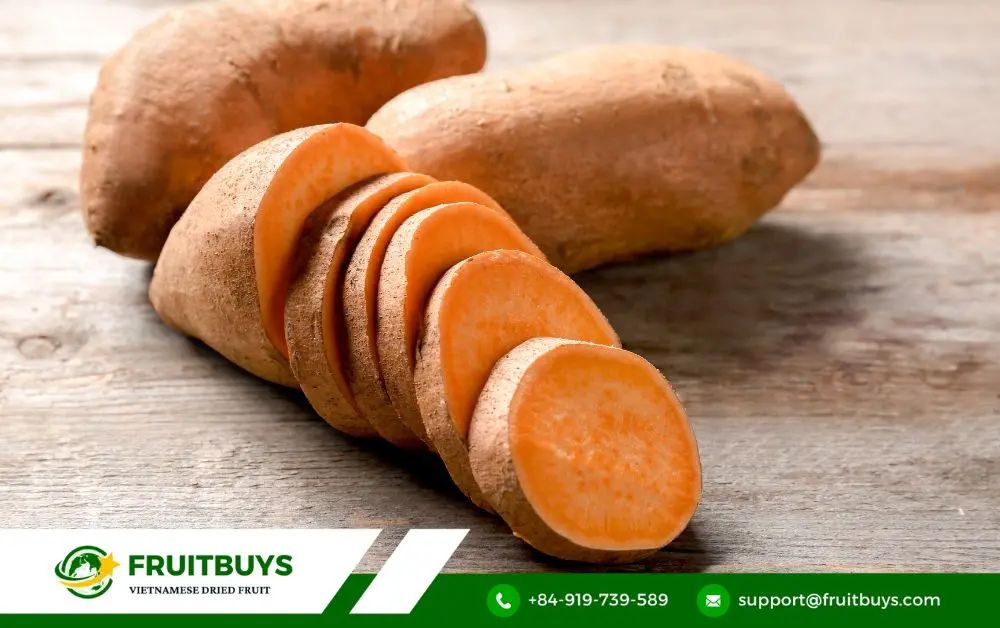
As you can see, sweet potatoes are rich in beta-carotene, vitamin A, vitamin C, vitamin B6, manganese, and copper. These nutrients can help protect your eyesight, skin health, immune system, nervous system, bone health, and antioxidant status. Here are some of the health benefits of sweet potatoes based on scientific evidence:
- Improving eye health: Beta-carotene and vitamin A are essential for maintaining healthy vision and preventing eye diseases such as age-related macular degeneration and cataracts. A study published in the American Journal of Clinical Nutrition found that eating foods rich in beta-carotene and vitamin A can reduce the risk of vision loss by up to 35%.
- Preventing anemia: Iron and vitamin C are important for producing red blood cells and preventing anemia. Iron helps carry oxygen to your cells, while vitamin C helps absorb iron from plant sources. A study published in the Journal of Nutrition found that eating foods rich in iron and vitamin C can improve iron status and hemoglobin levels in women with iron deficiency anemia.
- Supporting gut health: Fiber and antioxidants are beneficial for your digestive system and gut microbiome. Fiber helps regulate your bowel movements and prevent constipation, while antioxidants help protect your gut lining from inflammation and damage. A study published in the Journal of Functional Foods found that eating sweet potato peel can increase the number and diversity of beneficial bacteria in your gut.
- Fighting inflammation: Beta-carotene, vitamin C, and other phytochemicals in sweet potatoes have anti-inflammatory properties that can help reduce chronic inflammation and oxidative stress in your body. Chronic inflammation and oxidative stress are linked to many diseases such as diabetes, obesity, cancer, and Alzheimer’s. A study published in the Journal of Medicinal Food found that eating sweet potato leaves can lower the levels of inflammatory markers such as C-reactive protein and interleukin-6 in your blood.
To store and select sweet potatoes for optimal freshness and quality, you should follow these tips:
- Choose sweet potatoes that are firm, smooth, and free of cracks, bruises, or sprouts.
- Avoid sweet potatoes that are green, wrinkled, or moldy.
- Store sweet potatoes in a cool, dark, and well-ventilated place for up to two weeks.
- Do not refrigerate sweet potatoes as this can affect their taste and texture.
V. Why You Should Eat More Sweet Potatoes for Weight Loss
Sweet potatoes are not only good for your health, but also for your waistline. They can help you lose weight by keeping you full longer, reducing your appetite, and boosting your metabolism. Here are some of the ways that sweet potatoes can aid weight loss:
- Keeping you full longer: Sweet potatoes are high in fiber and water, which can help you feel satiated and prevent overeating. Fiber also slows down the digestion and absorption of carbohydrates, which can keep your blood sugar and insulin levels stable. A study published in the Journal of the American College of Nutrition found that eating a high-fiber breakfast with sweet potatoes can reduce hunger and food intake throughout the day.
- Reducing your appetite: Sweet potatoes contain a type of starch called resistant starch, which resists digestion and acts as a prebiotic for your gut bacteria. Resistant starch can help lower your appetite by increasing the production of short-chain fatty acids such as butyrate, which can suppress the activity of hunger hormones such as ghrelin. A study published in the British Journal of Nutrition found that eating resistant starch can reduce food intake by up to 10%.
- Boosting your metabolism: Sweet potatoes are rich in vitamin B6, manganese, and copper, which are involved in energy metabolism and fat burning. Vitamin B6 helps convert food into energy and supports the breakdown of glycogen, which is the stored form of glucose. Manganese and copper help activate enzymes that are involved in carbohydrate and fat metabolism. A study published in the Journal of Nutritional Science and Vitamin ology found that eating sweet potatoes can increase the resting metabolic rate by up to 23%.
To enjoy sweet potatoes as a low-calorie and satisfying snack or meal replacement, you can try these ways:
- Smoothies: Blend sweet potatoes with almond milk, banana, cinnamon, and honey for a creamy and delicious smoothie that can keep you energized and full for hours.
- Muffins: Bake sweet potatoes with oat flour, eggs, maple syrup, and nuts for a healthy and tasty muffin that can satisfy your sweet tooth without adding too many calories.
- Hummus: Mash sweet potatoes with chickpeas, tahini, lemon juice, garlic, and salt for a creamy and flavorful hummus that can be used as a dip or spread for crackers, bread, or veggies.
VI. Conclusion
Sweet potatoes are one of the most nutritious and delicious vegetables you can eat. They are loaded with beta-carotene, vitamin A, vitamin C, vitamin B6, manganese, copper, fiber, and antioxidants that can boost your immune system, lower your blood sugar, prevent anemia, support gut health, fight inflammation, improve eye health, and help you lose weight. But where can you find the best sweet potatoes in the market? The answer is FruitBuys Vietnam. We are a professional wholesale supplier and exporter of premium Exotic Fruit, Healthy snacks, Vegan snacks, No sugar snacks, and Low sugar snacks, Spicy snacks with advanced drying technologies such as Air Drying (AD), Freeze Drying (FD), Vacuum Frying (VF).

We focus on quality assurance, wholesale prices, high profits, and reliable logistics & supply with 7 years of experience. Natural tropical fruit lines from Vietnam such as: Banana, Dragon fruit, Durian, Jackfruit, Mango, Papaya, Passion fruit, Pineapple, Sapodilla, Strawberries, Soursop, Rambutan, Avocado, Cashew nuts, Sweet Potato, Lotus, Taro, and more.
If you are interested in buying sweet potatoes or any other exotic fruits and healthy snacks from us, please contact us at email support@fruitbuys.com or WhatsApp at +84-919 739 589. We will be happy to provide you with more information and offer you the best deals. Don’t miss this opportunity to enjoy the health benefits of sweet potatoes and other amazing products from FruitBuys Vietnam. Contact us today and place your order now!
VII. FAQs
Is it good to eat sweet potato everyday?
- Yes, it is good to eat sweet potato everyday as long as you don’t exceed your daily calorie needs and you eat it in moderation and with healthy cooking methods. Sweet potato can provide you with many essential nutrients and antioxidants that can improve your health and well-being.
Why is sweet potato a superfood?
- Sweet potato is a superfood because it contains high amounts of beta-carotene, vitamin A, vitamin C, vitamin B6, manganese, copper, fiber, and antioxidants that can boost your immune system, lower your blood sugar, prevent anemia, support gut health, fight inflammation, improve eye health, and help you lose weight.
Is sweet potato healthier than regular potato?
- Sweet potato is healthier than regular potato in many aspects. Sweet potato has a lower glycemic index than regular potato, which means it causes less spikes in blood sugar and insulin levels. Sweet potato also has more beta-carotene, vitamin A, vitamin C, vitamin B6, manganese, and copper than regular potato. These nutrients can benefit your eyesight, skin health, immune system, nervous system, bone health, and antioxidant status.
Is sweet potato good for your belly?
- Sweet potato is good for your belly in several ways. Sweet potato can help you lose belly fat by keeping you full longer, reducing your appetite, and boosting your metabolism. Sweet potato can also help you prevent or reduce belly bloating by supporting your gut health and digestion. Sweet potato can also help you fight belly inflammation by providing anti-inflammatory nutrients and antioxidants.
FruitBuys Vietnam is a leading supplier of freeze dried fruit and dried fruit snacks in Vietnam. We dry fruit without added sugar to create healthy and delicious snacks for both individuals and businesses. We offer a wide variety of fruits, great wholesale prices, and fast shipping. We also provide packaging and printing services, no minimum quantity order policy, free samples, and support for customs clearance. Contact us today to order our high profit margin products and taste our dried fruits.

